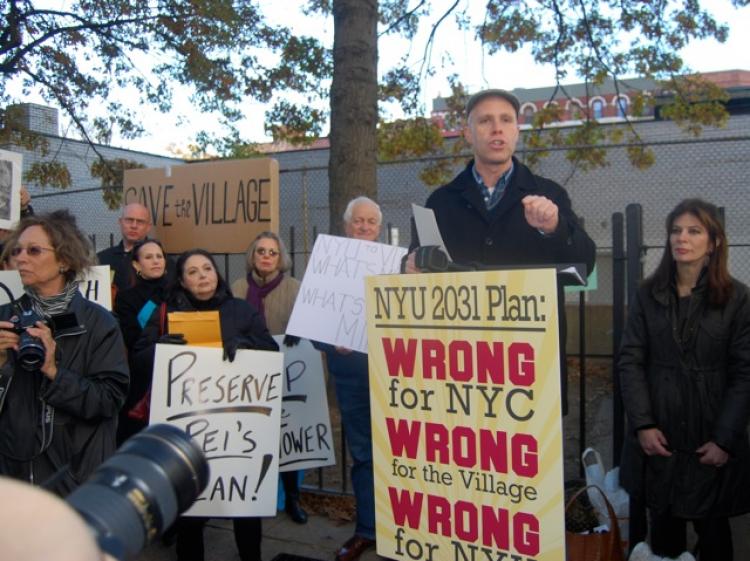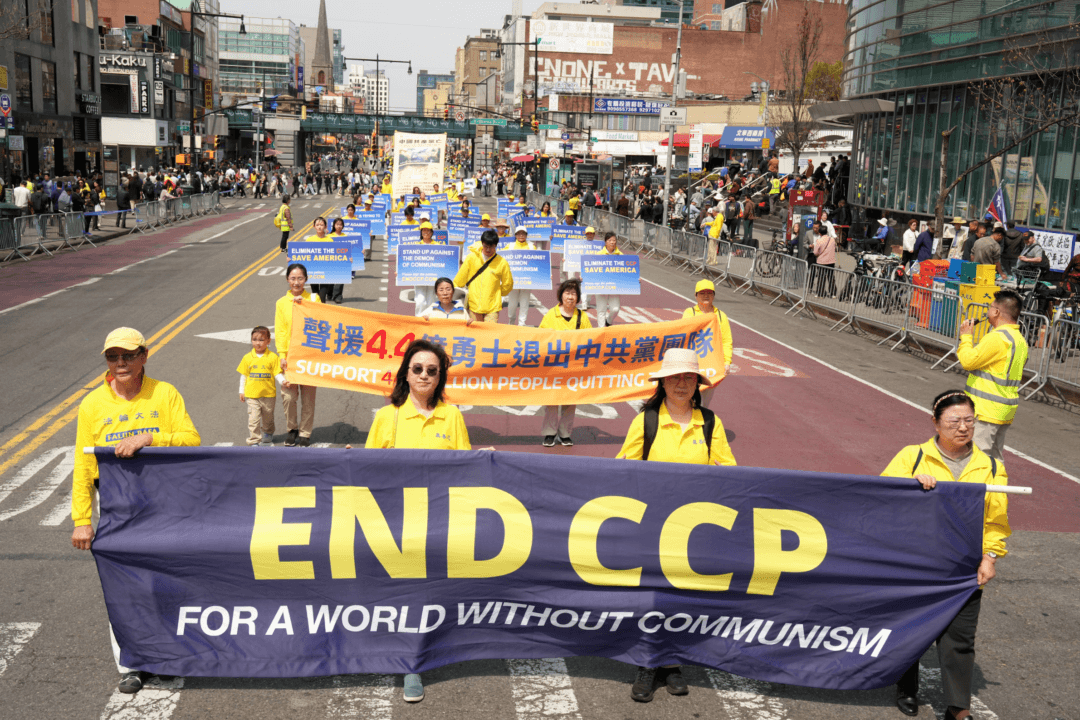NEW YORK—Greenwich Village residents rallied in opposition to New York University’s (NYU) expansion plans at Bleecker Street on Sunday. As outlined in NYU’s “Framework 2031,” the private institution plans to expand by six million square feet over the next two decades, aiming to achieve this goal by its 200th year anniversary in 2031.
The first planned building is a 40-story tower near the Silver Towers complex at Bleecker Street and LaGuardia Place. As the structure is planned to be 400 feet tall, some people are concerned that the Silver Towers complex would lose the open space it currently has.
According to Lee Silberstein, spokesperson for NYU 2031, the building will be primarily used for NYU-affiliated housing and hotel.
Neighborhood residents, including NYU faculty and students, and the Greenwich Village Society for Historic Preservation (GVSHP) have formed the Community Action Alliance on NYU 2031 (CAAN2031), a coalition of over 30 groups, to protest the new tower.
Andrew Berman, executive director of GVSHP, says this would be the tallest building ever built in Greenwich Village, and it would be on a landmark site. The Silver Towers are three residential buildings enclosing an open lawn with a Picasso sculpture in the center. They were designed by architect I.M. Pei.
“It would be a hotel in a zone strictly for residential use, and we’re going to fight that,” Berman said. “It would require the city to lift protections for the open space in this area, and we’re going to fight that. It would require the city to lift deed restrictions that were the terms under which NYU was given this land 50 years ago by the city of New York, and we’re going to fight that, too. In fact, this whole plan would violate the premise upon which NYU was given permission to build here in the first place.”
Because the proposed construction site is landmarked, the Landmarks Preservation Commission will have to vote on whether or not to allow NYU to build the tower there. The project would also require zoning changes. If NYU does not obtain permission to utilize the site, the tower will instead be built at the location of the Morton & Williams supermarket, at the corner of the same block.
According to Berman, there is a better alternative that NYU should be considering—the Financial District. There are vacant high-rise buildings in that area and development would be welcomed there, he says, but NYU is not considering it.
Three areas have been marked for expansion under the NYU 2031 plan—the “core” around Washington Square Park, the “neighborhood” from 18th Street and Eighth Avenue to Chinatown, and three “remote” locations, including the First Avenue health corridor, Governor’s Island, and Downtown Brooklyn.
Breman urged the residents to attend the Community Board Public Hearing on Monday, Nov. 8, at 6:30 p.m. at Grace Church School in order to vote against construction of the tower on Bleecker Street.
Pat Albin, president of the Board of 505 LaGuardia, said putting up NYU residential building and hotel in this location may be appealing to the existing faculty and students, but would be counterproductive to the institution’s efforts to attract new talent.
“As an academic, I’m familiar with the draw of New York City as a magnet, and particularly with the draw of Greenwich Village—an artistic, historic, culturally fascinating, and safe area. NYU threatens to replace all of this with something homogenized, overly dense, anomic, and perpetually under construction,” Albin said.
Silberstein said that while NYU understood the opposition’s wish to express their view, the institution will continue to make their case for growth.
“We think our plan—which emerges out of three-plus years of dialogue with community groups—shows a way forward, to do it thoughtfully and transparently,” he added.







